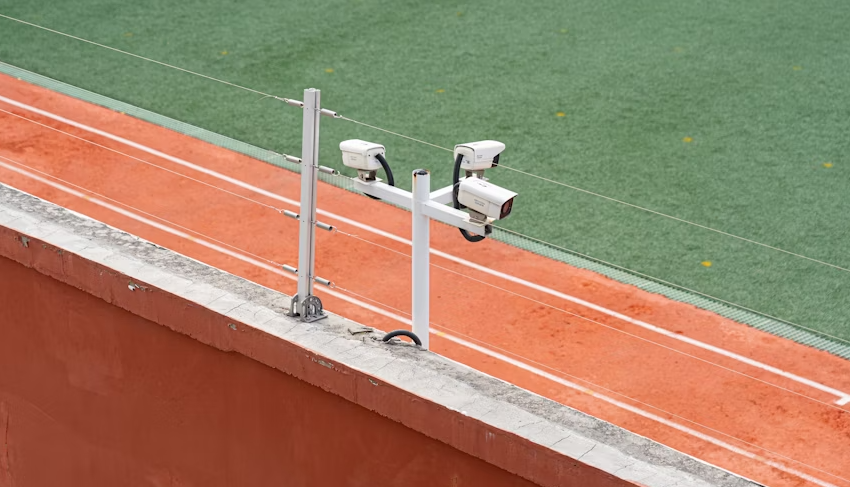Dr. Jennifer Walsh, the sports medicine coordinator at Valley University, received an urgent message from the soccer coach: “We need to discuss Emma’s movement patterns from yesterday’s practice. Something looked different.” In the past, this conversation would have relied on subjective observations and memory. Today, she opened her laptop and accessed comprehensive movement data that revealed subtle changes in the athlete’s gait patterns that might indicate developing injury risk.
Modern athletics increasingly recognize that athletic performance and injury prevention depend on understanding movement patterns, training loads, and performance trends that extend far beyond basic statistics and casual observation. The challenge has always been collecting comprehensive data without disrupting training routines or requiring expensive laboratory testing.
Traditional sports monitoring relied heavily on subjective assessments, basic performance metrics, and occasional laboratory analysis that provided limited insight into daily training patterns and gradual performance changes that significantly impact athletic development and health.
The Evolution of Sports Monitoring
Professional sports teams have gradually embraced comprehensive monitoring systems that track everything from heart rate variability to sleep patterns, but these systems traditionally required expensive wearable technology and dedicated analysis staff that remained beyond the reach of most athletic programs.
The gap between comprehensive monitoring and practical implementation created a significant blind spot in athletic development. Coaches relied on visual observation and athlete self-reporting to assess training readiness, injury risk, and performance optimization opportunities.
Even when programs could afford basic monitoring equipment, the data collection and analysis requirements often exceeded their technical capabilities, resulting in unused equipment and missed opportunities for meaningful performance improvement.
AI-Powered Movement Analysis
Modern AI tracking camera technology revolutionizes sports monitoring by providing comprehensive movement analysis without requiring wearable devices or laboratory testing. These systems continuously monitor athletic performance during normal training and competition activities.
The AI analysis identifies movement patterns, technique variations, and performance trends that reveal important information about athletic readiness, injury risk, and optimization opportunities. This comprehensive monitoring happens automatically during regular athletic activities without disrupting training routines or requiring additional time commitments.
The visual analysis provides objective data about movement quality, consistency patterns, and performance trends that supplement traditional coaching observations with quantitative insights that guide training decisions and injury prevention strategies.
Injury Prevention Through Movement Monitoring
One of the most valuable applications of AI tracking in sports monitoring involves identifying movement patterns that indicate increased injury risk. Fatigue-related technique breakdowns, movement asymmetries, and overuse patterns often develop gradually and remain invisible to casual observation.
Automated movement analysis can detect these subtle changes before they result in injuries, providing early warning systems that allow for proactive intervention. Coaches and medical staff can adjust training loads, address technique issues, or implement recovery protocols based on objective movement data.
This predictive approach to injury prevention represents a fundamental improvement over reactive medical treatment, potentially saving athletic careers and reducing long-term health impacts associated with sports injuries.
Performance Optimization Through Data Analytics
Smart monitoring systems provide comprehensive performance analytics that reveal optimization opportunities invisible to traditional coaching observation. Movement efficiency patterns, consistency trends, and performance variability data help coaches make informed decisions about training focus and competitive strategy.
The continuous monitoring capability tracks performance patterns over extended periods, identifying seasonal trends, improvement trajectories, and performance plateau indicators that guide long-term development planning. This longitudinal perspective provides insights that short-term observation cannot achieve.
Individual athlete monitoring reveals optimal training loads, recovery requirements, and performance readiness indicators that help coaches personalize training programs for maximum effectiveness while minimizing injury risk.
Real-Time Training Load Management
Modern athletic training requires careful balance between training intensity and recovery to optimize performance while preventing overuse injuries. AI tracking provides real-time insights into training load accumulation and recovery status through movement quality analysis.
The system monitors movement patterns that indicate fatigue, technique degradation, and reduced performance capacity, providing objective data that guides training modification decisions during practice sessions. This real-time feedback prevents excessive training loads that might compromise performance or increase injury risk.
Multi-Athlete Monitoring and Team Analytics
Smart monitoring systems can simultaneously track multiple athletes during team training sessions, providing comprehensive team analytics that reveal group performance trends, individual development patterns, and relative performance comparisons that guide coaching decisions.
The team perspective identifies athletes who might be struggling with training loads, experiencing performance declines, or demonstrating exceptional improvement that warrants recognition or modified training approaches. This comprehensive monitoring ensures that no athlete’s performance changes go unnoticed.
Integration with Sports Medicine
AI tracking data provides valuable information for sports medicine professionals who need objective movement data to assess injury risk, monitor rehabilitation progress, and guide return-to-play decisions. The comprehensive movement analysis supplements clinical assessments with functional performance data.
The collaboration between coaching staff and medical professionals improves when both groups have access to the same objective performance data. Treatment decisions, training modifications, and injury prevention strategies become more effective when based on comprehensive movement analysis rather than subjective observations.
Long-Term Athletic Development Tracking
Smart monitoring creates comprehensive records of athletic development that span seasons and years, providing valuable insights into long-term performance trends, improvement patterns, and career development trajectories. This longitudinal data becomes increasingly valuable as athletes advance through different competitive levels.
The historical performance data helps coaches understand individual athlete development patterns, identify optimal training approaches, and predict performance potential based on objective improvement trends rather than subjective assessments.
Cloud-Based Monitoring Platform
The cloud infrastructure supporting modern AI tracking systems ensures that monitoring data remains accessible to coaching staff, medical professionals, and athletes regardless of location. The 20GB of free cloud storage accommodates extensive monitoring data without ongoing subscription costs.
Remote monitoring capability allows experts to provide consultation and analysis support to programs regardless of geographic location, democratizing access to sophisticated sports monitoring expertise that was previously available only to elite programs.
Privacy and Data Security in Athletic Monitoring
Smart monitoring systems must balance comprehensive data collection with appropriate privacy protection and secure data management. Modern systems provide robust security features that protect sensitive athletic performance data while ensuring appropriate access for coaching and medical staff.
The data ownership and sharing policies ensure that athletes maintain control over their performance information while allowing authorized personnel to access the data necessary for effective coaching and medical support.
The Future of Intelligent Sports Monitoring
Current AI tracking technology provides the foundation for even more sophisticated monitoring capabilities that will include predictive health modeling, automated coaching recommendations, and comprehensive wellness integration that monitors all aspects of athletic performance and health.
Future developments will integrate physiological monitoring, psychological assessment, and environmental factors to provide complete pictures of athletic readiness and performance optimization opportunities that guide every aspect of athletic development and competitive preparation.
The evolution toward intelligent sports monitoring represents a fundamental shift in how athletics approaches performance optimization and athlete health management, providing objective, comprehensive, and actionable insights that enhance every aspect of athletic development while protecting athlete health and maximizing performance potential across all competitive levels.









